- :
- 2008 Mazda5 GT
First, always RTM!  !
!
After three attempts, figure I can share some pointers on my ATF cooler and filter experience.
Attempt 1: Thought it might be a good idea to create some separation and not block airflow to the condenser – wrong. I did not RTM . Burned a drill bit going into the bumper beam…
. Burned a drill bit going into the bumper beam…
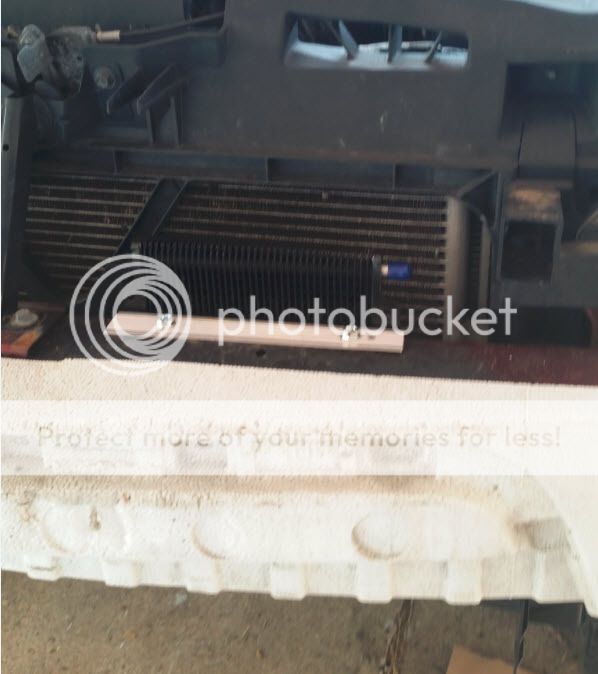
Attempt 2: This will work but my guts say it just doesn’t seem right or to my liking. Too many kinks/bends in the hose and seems to run longer hoses than necessary.
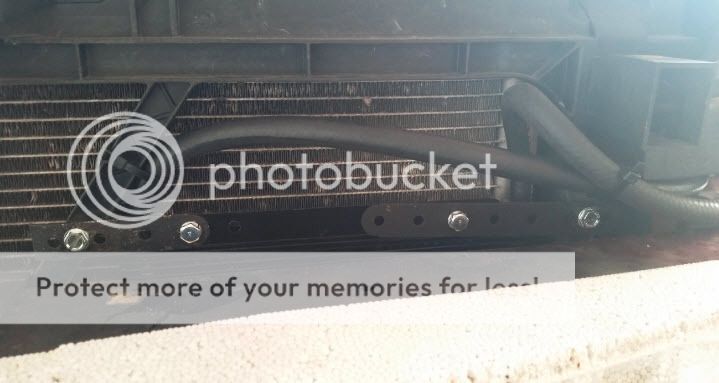
Attempt 3: Finally wised up and read the page long manual. This looked like a nice place to drill a hole . Highly recommend sleeves to prevent the hose from rubbing against the edges of the hole and protect it overall.
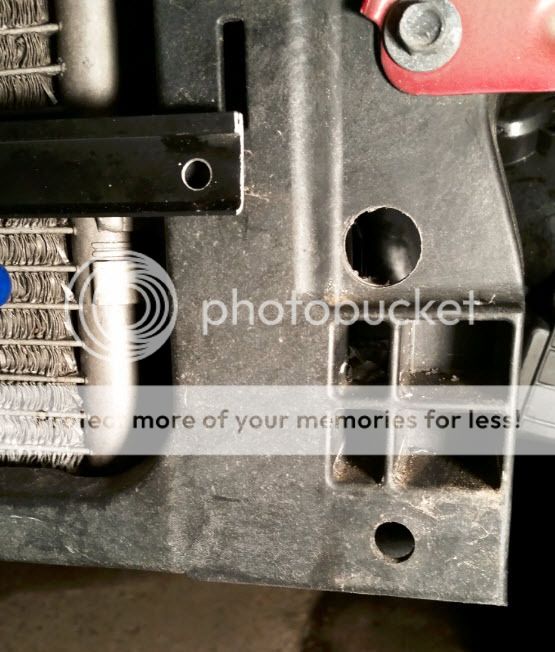
Much cleaner and shorter.

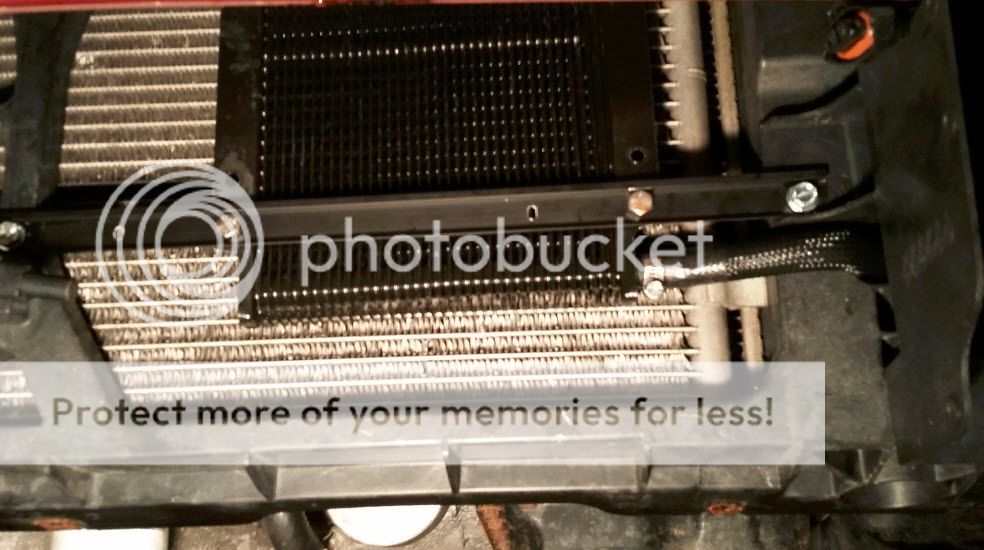
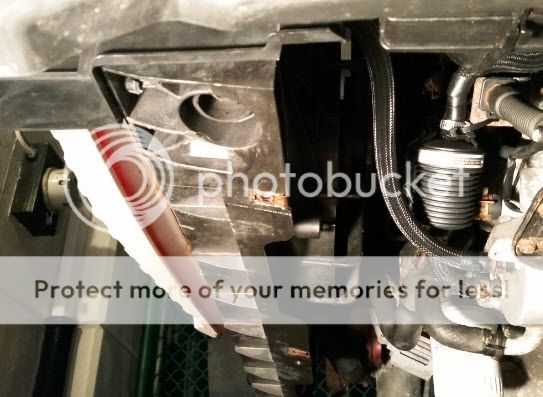
Attempt 4 would be more ideal, that is mounting it directly onto the condenser, sans brackets. I considered it but it looks like a real PITA to separate the condenser and radiator enough to use the pull straps through (I read it is not a good idea to tie all 3 together).
Overall, much happier with the 3rd try. Vertical mounting allows you to run shorter hose via most direct route eliminating ~2ft of hose vs horizontal mount and the oil flow path ‘looks’ much better. My aux cooler is connected AFTER the OE cooler, per B&M instruction. I did not try but I do think if you route to aux cooler FIRST, horizontal mount may run with less hose length and flow better. Spend $7 (10ft, needed 3-4 ft) for PET braded sleeves. Another very important point (to me) is that this setup is fully serviceable. I can access every nut, bolt, and clamp should I need to service something. The bracket was made out of $3 aluminum door sweeps from Wal-Mart (measure, cut, drill, *repeat). Two relief cuts and bend one end to account for the rise.
EDIT: For ATF filter, I decided to go the inline filter route (Magafine). I simply disconnected both ends of the ATF outlet hose (to OE cooler) and cutout the section that equals the length of the filter. I made sure to position the filter body so it flows down and that there's clearance and a location to hang the filter body (zip tie) to something as it will add weight once wet.
Moral of the story, don’t be a Homer (like me) and RTM. I could have avoided some work and saved a drill bit.


After three attempts, figure I can share some pointers on my ATF cooler and filter experience.
Attempt 1: Thought it might be a good idea to create some separation and not block airflow to the condenser – wrong. I did not RTM

Attempt 2: This will work but my guts say it just doesn’t seem right or to my liking. Too many kinks/bends in the hose and seems to run longer hoses than necessary.

Attempt 3: Finally wised up and read the page long manual. This looked like a nice place to drill a hole . Highly recommend sleeves to prevent the hose from rubbing against the edges of the hole and protect it overall.

Much cleaner and shorter.



Attempt 4 would be more ideal, that is mounting it directly onto the condenser, sans brackets. I considered it but it looks like a real PITA to separate the condenser and radiator enough to use the pull straps through (I read it is not a good idea to tie all 3 together).
Overall, much happier with the 3rd try. Vertical mounting allows you to run shorter hose via most direct route eliminating ~2ft of hose vs horizontal mount and the oil flow path ‘looks’ much better. My aux cooler is connected AFTER the OE cooler, per B&M instruction. I did not try but I do think if you route to aux cooler FIRST, horizontal mount may run with less hose length and flow better. Spend $7 (10ft, needed 3-4 ft) for PET braded sleeves. Another very important point (to me) is that this setup is fully serviceable. I can access every nut, bolt, and clamp should I need to service something. The bracket was made out of $3 aluminum door sweeps from Wal-Mart (measure, cut, drill, *repeat). Two relief cuts and bend one end to account for the rise.
EDIT: For ATF filter, I decided to go the inline filter route (Magafine). I simply disconnected both ends of the ATF outlet hose (to OE cooler) and cutout the section that equals the length of the filter. I made sure to position the filter body so it flows down and that there's clearance and a location to hang the filter body (zip tie) to something as it will add weight once wet.
Moral of the story, don’t be a Homer (like me) and RTM. I could have avoided some work and saved a drill bit.


Last edited:
